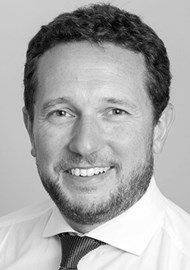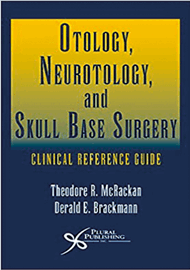This concise pocket-sized textbook aims to provide a practical reference that clinicians can use in every day otological and skull base practice. The senior author, Derald Brackmann, is one of the leading neurotologists of the modern era and, together with his co-author who was previously one of Dr Brackmann’s fellows, has brought together a group of predominantly American authors of varying seniority from residents to professors to cover a wide range of otological conditions.
The book has a traditional structure, starting with a summary of basic anatomy and physiology and then moving through otological and neurotological evaluation and on to clinical management. The main clinical sections are otological infections, hearing loss and its rehabilitation, skull base disorders, vestibular disorders and management of facial nerve disease.
The content of each chapter is well-presented and very easy to read and assimilate, with most chapters divided up in to concise bullet points. The size of the book belies the depth of information held within it. There are very few diagrams included but this is born out of the necessity to keep the book to a manageable size. Throughout the book, the authors consistently provide a balanced, comprehensive and up-to-date approach to the management of ear disease.
There are some aspects of the book that could perhaps have been done differently. For example, the chapter on cholesteatoma is placed within the section titled ‘Otologic Infection’. It is not infection. This chapter is also limited to middle ear cholesteatoma and does not discuss more extensive petrous bone cholesteatoma and its management.
Similarly, the section on tympanoplasty could be expanded upon. There is only a paragraph discussing tympanoplasty techniques and almost nothing related to ossiculoplasty. A more extensive discussion of these points would have been helpful. The latter could, for example, have been included as a chapter in the ‘Hearing Rehabilitation’ section.
The ‘Common Symptoms’ section also seems a little superfluous given that only tinnitus and otalgia are included. This is because there are separate sections on hearing loss and vertigo. It would probably have been better to remove this section and include chapters on tinnitus and otalgia in other sections.
Finally, the history section is interesting but does not mention some of the other important influential figures in the development of skull base surgery, for example, Hugo Fisch.
Overall, however, these are minor points. The book is an outstanding synopsis of the modern management of otological disease. Its handy size makes it practical to carry around and, as such, it is an excellent resource that is likely to become the go-to text for busy clinicians in their every day practice and to those who are taking their exams. I commend the authors for their achievement and would highly recommend this book.





